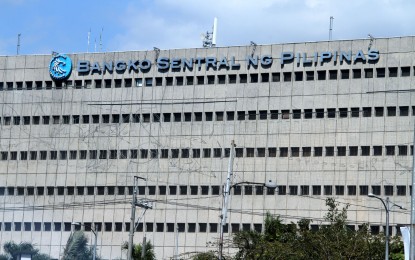
MANILA – Demand for loans in the second quarter of 2020 declined to levels last seen in 2009 and banks tightened their credit standards given their outlook on the economy due to the pandemic.
In a virtual briefing Monday, BSP Department of Economic Research (DER) acting Deputy Director Lara Romina Ganapin said results of the second-quarter 2020 Senior Bank Loan Officers’ survey (SLOS) done from June 1 to July 7, 2020 showed that demand fell primarily due to borrowers’ outlook on their ability to pay and the need for loan per se.
Respondents said demand for loans among firms declined due to the latter’s business outlook on account of the pandemic, the decline in inventory financing needs and working capital requirements, and delay in investment plans for plants and equipment.
Meanwhile, the drop in households’ loan demand was attributed to lower household consumption and housing investments.
Respondents, however, expect loan demand from enterprises to recover in the third quarter but loan demand from households is expected to still post a net decrease which, Ganapin said “largely reflected lower housing investment and household consumption.”
The result of the latest SLOS showed a large number of bank officers who reported tighter credit standards, a first after 44 consecutive quarters of unchanged credit standards.
Ganapin said the tightening of credit standards applies to all types of loans for enterprises and households.
“Respondent banks attributed the tightening of over-all credit standards to less favorable economic outlook, deterioration in the profile of borrowers and profitability of banks’ portfolios and an overall risk tolerance of banks, among other factors,” she said.
During the same briefing, BSP Assistant Governor Illuminada Sicat said the drop in loan demand in the second quarter this year was similar to what happened in 2008 during the global financial crisis.
She said this development shows borrowers’ weak sentiments.
“The decline in loan demand reflects the uncertainties,” Sicat said, citing also an improved outlook for the third quarter.
Asked about the impact of the central bank’s measures targeted to ensure healthy economic activities amid the pandemic, Sicat said a huge amount of liquidity has been infused into the economy as a result of the BSP interventions.
These measures include the total of 175 basis points cut in the central bank’s key policy rates, the 200 basis points reduction in universal and commercial banks’ (U/KBs’) reserve requirements, and the decision to allow small banks’ lending to micro, small and medium enterprises (MSMEs) as reserve requirement compliance.
These measures are said to have released about PHP1.3 trillion worth of liquidity into the system.
During the same briefing, BSP DER Director Dennis Lapid said there is more than enough liquidity released into the system for the needs of households and businesses in terms of credit.
“I think the question now is whether households and businesses are feeling the pressure from some of the containment measures being implemented. So that suggests that there could be a need for measures that directly support demand on the part of households and businesses,” he said.
Lapid said these measures cannot lean solely on monetary policies but also fiscal measures like fiscal stimulus and direct support on workers, such as the social amelioration for households and relief to businesses, as well as health measures to protect the public and help workers go back to work. (PNA)
